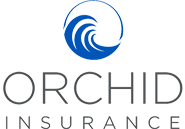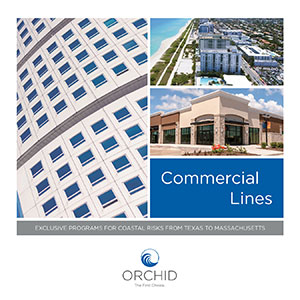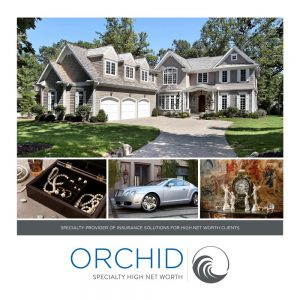As Tropical Storm Isaias ripped across the Eastern shore the first week of August, Chad Barrick could see a section of the roof lifting just a bit while he lay in bed inside his family’s third-floor condo unit in Salisbury, Md. Not long after he woke his 14-year-old daughter and told her to go downstairs to the safety of a neighbor’s unit, he heard another rumble. Wind and rain had peeled a substantial portion of the roof off the structure, blowing it into the parking lot below.
Once crews began to clean up bits of the roof, siding and insulation scattered about, a building inspector estimated $200,000 worth of damage to the entire structure. Just how much money the owner of the complex will get from insurance to pay for storm repairs will depend on the coverages and the deductibles written into the landlord’s policy.
Deductibles represent the money an insured must pay before insurance coverage kicks in. Most commercial insurance policies cover property damage and some general liability claims against the business. Selecting a policy that includes a high deductible usually translates into lower monthly premiums. It also means when weather events like Tropical Storm Isaias strike, business owners will be responsible to pay more in out-of-pocket costs to rebuild and recover.
Hurricane season can be harsh on coastal property owners, especially those responsible for commercial buildings, such as condominium complexes and multiple apartments. Because torrential wind and rain can damage even the sturdiest structures, it is imperative that these policyholders have the insurance they need in advance of a storm. Securing a deductible that helps to reduce the property owner’s out-of-pocket expenses if disaster strikes can determine not only whether the business is able to recover, but how soon it might begin to operate again.
Supplemental Coverage
Gusty winds from hurricanes and tropical storms along with hail can rip shingles and damages roofs, blow out windows, open the doors to flooding and create havoc for businesses in their path. Windstorm coverage is a special type of insurance often required to protect against these types of physical losses to property and related contents beyond the limits of a primary policy.
“In areas across the United States that experience frequent severe storms, windstorm coverage is a necessity for businesses,” said Nathan Coomes, a business development executive at Orchid Insurance, which offers commercial lines coverages for coastal risks from Texas to Massachusetts. “It’s just a matter of identifying what coverages are available and the amount of protection that is needed in anticipation of storm-related damages.”
Unlike the fixed dollar deductibles assigned to damages from a fire, plumbing or theft in a primary policy, windstorm deductibles amount to a percentage of the total insured value of a business. Depending on the location, the level of these percentages can range from 1-5 percent. The greater the risk of wind damage, the higher the percentage. For a $1 million commercial policy that includes a 2 percent deductible, the business owner is responsible for the first $20,000 toward a claim.
Although these percentages may seem small, these deductibles can mount quickly in areas prone to hurricanes and severe storms. One reason is the deductibles are applied to each weather event. The frequency and intensity of recent storms has not helped matters. With insurance carriers forced to increase rates and windstorm deductibles to account for their bottom line, commercial policyholders are hard-pressed to reach deeper into their pockets to begin the recovery process following a loss.
One way to get around the higher windstorm deductibles is to purchase buyback coverage. Policyholders pay this additional premium — also called a wind/hail deductible buyback — to buy down an increment or two from the percentage tied to their primary commercial property insurance.
Lessen the Blow
Savings toward deductibles can be significant. Consider the business owner who carries a 5 percent wind deductible which amounts to a $50,000 financial burden on a $1 million property. By adding a standalone wind buyback policy, the business owner could lower the deductible from 5 percent to 1 percent or to $10,000 from $50,000.
The cost of a separate deductible buyback can range between 4 percent to around 12 percent of the primary policy depending on aspects of the business including location, construction, occupancy, risk prevention measures, and exposures. For businesses in parts of the United States that experience frequent severe weather, the added premium is another tool for agents to ensure their clients have adequate coverage.
Consider how a contingency plan, such as a wind deductible buyback, could have saved a homeowner’s association in the long run. The board that governs the association purchased an insurance policy with a $20 million limit to cover its condominium complex which encompasses 20 buildings and 200 units. To save money on the premium, the association opted for 5 percent windstorm deductible.
For the next three years, the same policy was renewed. Because the association had set the windstorm deductible at 5 percent of the policy limit, it would be responsible for the first $1 million for mandatary repairs before insurance could offer some relief. The policy worked fine until a hurricane struck, directly hitting the condominium complex. All units within the 20 buildings suffered major damage to the roofs and the interiors, leaving their owners responsible for a share of the association’s deductible.
“Saving a few thousand dollars in premiums may seem like a sound financial decision,” said Coomes, at Orchid Insurance, which offers a specialty perils program for commercial properties that includes Wind/Hail Deductible Buyback. “But it doesn’t do much good if the deductible can’t be met when it is needed most.”
Orchid Underwriters Insurance, LLC, is the First Choice for commercial property insurance. If you need flexible products, fast processes, expert underwriting and competitive pricing, superior customer service is a phone call away at 1-866-370-6505 or visit http://orchidinsurance.com/




